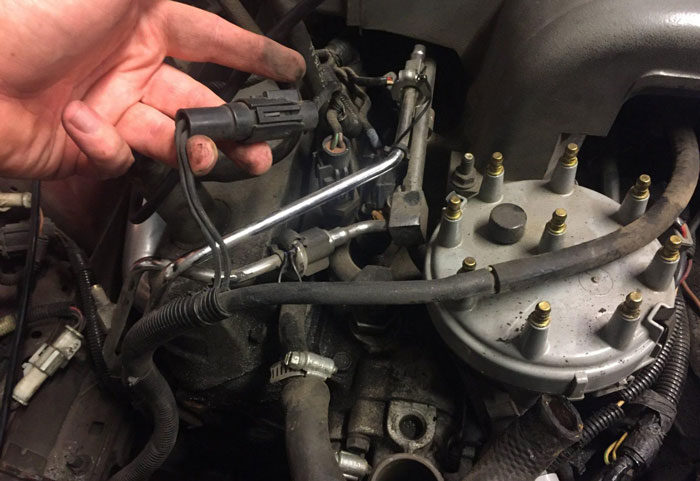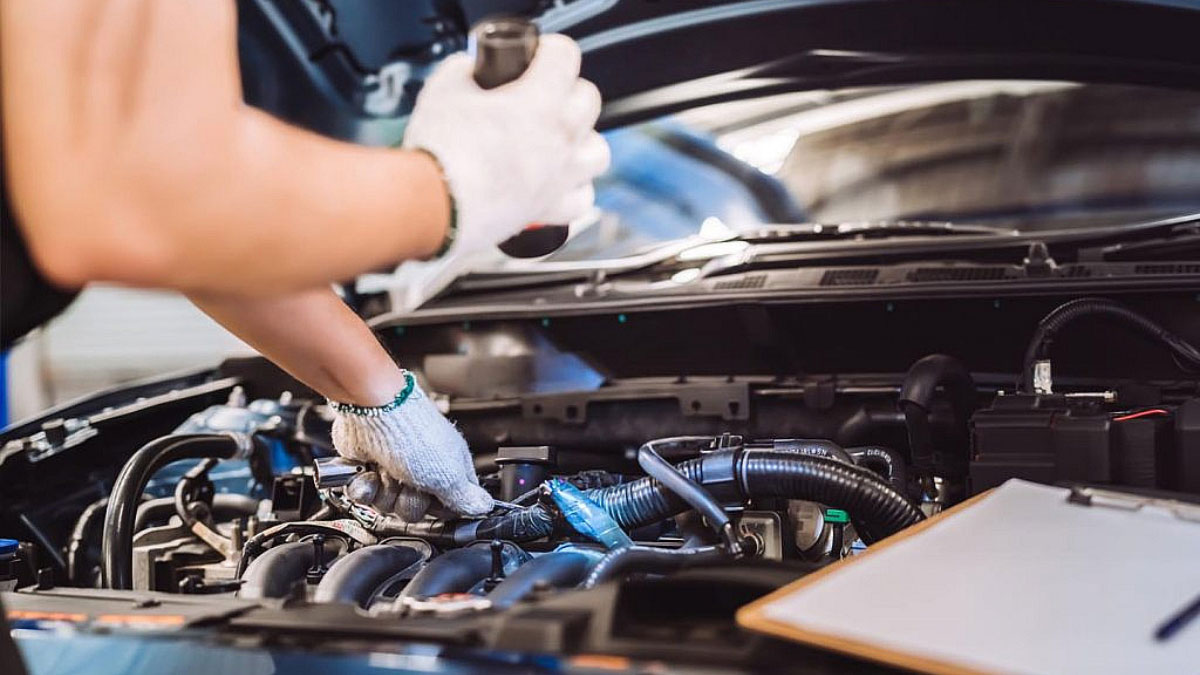So, picture this: you’re cruising down the road, wind in your hair, tunes blasting, feeling like a total boss behind the wheel. But wait, what’s that funky smell? And why does your car suddenly feel like it’s playing a game of hiccup? Well, my friends, you might just be dealing with a bad purge valve situation.
I know, I know, “What in the world is a purge valve?” you might be asking. Don’t worry, I’ve got your back. In this text, I’ll walk you through five sneaky symptoms to keep an eye out for when you suspect your purge valve is up to no good. Trust me, it’s better to catch these signs early before your car starts acting like a rebellious teenager on a road trip.
Understanding the Purge Valve Function
So, buckle up, folks! Let’s jump into the mysterious world of the purge valve. Picture this: the purge valve is like the car’s very own breathalyzer, ensuring the engine only inhales clean air and nothing funky. It’s all about keeping the engine running smoothly and efficiently.
- What’s in a Name, You Ask?
- The purge valve, also known as the canister purge valve, is like the traffic cop of your car’s emission system. It regulates the flow of fuel vapor from the charcoal canister to the engine intake manifold.
- The Purge Valve’s Dance Moves
- When the engine’s running, the purge valve opens and closes to control the flow of fuel vapors. It’s like a secret dance routine happening under your hood to maintain the perfect air-fuel ratio.
- Why the Purge Valve is a Big Deal
- Without a properly functioning purge valve, your car might start acting like a picky eater, causing issues like rough idling, stalling, or even a pesky “check engine” light.
- The Eco-Friendly Sidekick
- Apart from keeping your engine happy, the purge valve also plays a crucial role in reducing harmful emissions by preventing fuel vapors from escaping into the atmosphere.
- Maintenance Tips for a Happy Purge Valve
- To ensure your purge valve keeps grooving smoothly, it’s essential to follow the manufacturer’s recommendations for regular maintenance. So, treat your purge valve right, and it’ll keep your ride purring like a contented kitty.
5 Symptoms of a Bad Purge Valve
Driving with a faulty purge valve can be a real gas… literally! Here are five telltale signs that your purge valve might need some TLC.

Check Engine Light Activation
So, you’re cruising along, and suddenly the “check engine” light decides to make an appearance. It’s like the car’s way of saying, “Hey buddy, we got a problem here!” Ignoring it could lead to more trouble than a sneeze during a haircut.
Lower Fuel Efficiency
If you find yourself filling up the tank more often than you used to, it might not just be gas prices… Your car’s poor fuel efficiency could be linked to a cranky purge valve, guzzling more gas than a frat boy at a kegger.
Fuel Odor
Ever catch a whiff of gasoline when you pull into the driveway? If your car smells like a mini gas station, it’s a red flag that your purge valve could be on the fritz. Time to roll down the windows… or invest in some air fresheners.
Engine Misfires and Rough Idle
Picture this: Your car starts shaking like it’s doing the cha-cha, and the engine sounds like it’s ready to break free and start a band. That’s your cue that the purge valve might be dancing to its beat, causing engine misfires and a rough idle.
Difficulty in Starting the Car
You turn the key, and instead of the purr of a content kitten, you get the wheeze of a deflating balloon. If starting your car feels like a Herculean task, your purge valve could be playing hide-and-seek with your engine’s performance.
The Risks of Ignoring Purge Valve Symptoms
Ah, dear reader, let’s investigate into the consequences of turning a blind eye to those pesky symptoms that your car’s purge valve is desperately trying to communicate. Buckle up, we’re in for a bumpy ride if we choose to ignore these warning signs!
Ignoring the Warning Lights:
If your car’s check engine light starts putting on a disco show, flashing and winking at you like a persistent party host, it’s time to pay attention. Ignoring this not-so-subtle warning is akin to sticking your head in the sand and pretending everything is hunky-dory in Car Land. Well, trust me, it’s not. Your engine needs some TLC, and fast!
Fuel Efficiency Goes Out the Window:
Picture this: you’re driving along, carefree and content, except for the fact that your fuel gauge seems to be dropping faster than you can say “gas station.” Ignoring the decrease in fuel efficiency caused by a bad purge valve is like giving your wallet a workout it didn’t sign up for. Don’t let your pennies evaporate along with that excess fuel vapor!
Smelling Trouble:
Oh, the sweet scent of success… or is it? If you catch a whiff of gasoline when you’re nowhere near a pump, it’s time to sniff out the issue – your purge valve might be up to no good. Ignoring fuel odors is like ignoring the fact that your favorite pizza joint suddenly smells like a flower shop. Something’s off, and it’s not just the scent.
Misfires and Shudders:
Imagine driving along and feeling your car perform an impromptu dance routine, complete with shakes and shimmies that would make even the best salsa dancer jealous. Well, that’s your engine misfiring due to a bad purge valve. Ignoring these performance hiccups is like pretending your morning coffee isn’t responsible for your sudden jitterbug moves. It’s time to address the issue before your car becomes a dance floor on wheels.
Rough Idling:
It’s like your car is having an existential crisis – it can’t seem to find its rhythm, constantly fluctuating between smooth operation and a jerky, uneven idle. Turning a blind eye to rough idling caused by a faulty purge valve is like pretending you can’t hear your neighbor’s dog howling at 3 am. It’s disruptive, annoying, and needs to be fixed pronto!
Starting Woes:
You turn the key, eager to hit the road, only to be met with a stubborn engine that refuses to come to life. If starting your car becomes a daily battle because of a bad purge valve, it’s time to stop playing hard to get with your vehicle. Ignoring this issue is like expecting your morning alarm to stop ringing just because you cover your ears – it’s not going to magically disappear.
Conclusion
Well, folks, when it comes to driving with a bad purge valve, it’s like playing a risky game of engine roulette. Remember, your car’s emission system is like its own little ecosystem, and that purge valve is the gatekeeper. Ignoring those warning signs is like pretending your engine is a drama queen throwing a tantrum. So, keep an eye out for those pesky symptoms like the “check engine” light winking at you or your car suddenly deciding to channel its inner race car driver. Trust me, it’s better to address these issues sooner rather than later. Your car will thank you, your wallet will thank you, and Mother Nature will give you a high-five for being a responsible driver.
Frequently Asked Questions
Will a bad purge valve cause misfire?
Yes, a stuck open purge valve can lead to hesitation, poor throttle response, or even a misfire.
What are the symptoms of a clogged evap canister?
One common symptom is the gas pump frequently shutting off during fueling, even with little fuel added.
How do I tell if my purge valve is bad?
A rough idle is a common symptom of a faulty purge valve, even without a check engine light.
What happens if you drive with bad purge valve?
Driving with a malfunctioning purge valve can risk damaging the EVAP system, causing fuel wastage and increased emissions.
Can you drive with a bad evap canister?
Driving with an EVAP leak is risky due to flammable fuel vapors and the potential impact on emissions.

